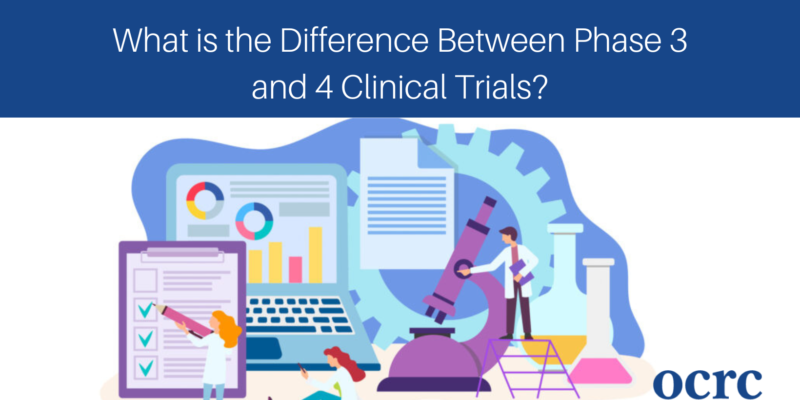
Clinical research is crucial to the development of treatments and medications as we know them today. In order for a medical treatment to be approved for use by the public, it must go through four phases of clinical trials in order to determine its efficacy and safety, and whether it affects everyone the same way.
Phase 1 is when a treatment is tested for the first time. This phase is generally done with a small group of volunteers. It primarily assesses safety and side effects of the treatment in question.
During Phase 2, the treatment is tested with a larger group of volunteers. This assesses its effectiveness and further evaluate its safety.
Phase 3 compares the new treatment to existing treatments. This is done with an even larger group of volunteers, and generally for a longer period of time. As a result, rare and/or long-term side effects are more likely to be discovered. Phase 3 is the final phase before a treatment receives FDA approval.
Following FDA approval, a treatment goes through Phase 4. This phase involves the largest group of participants. It can last for several years as researchers continue to monitor the efficacy and safety of the treatment.
Depending on the type of treatment being studied, a study could range from several weeks to several years; volunteers may or may not participate in every phase of the study. If you are considering volunteering for a clinical trial, make sure you know which phase the study is currently in. Also, understand the duration of your participation.
This summer, Moderna and National Institutes of Health (NIH) began Phase 3 of a clinical trial designed to investigate a potential vaccine for COVID-19. According to Anthony S. Fauci, M.D., director of National Institute of Allergy and Infectious Diseases (NIAID), earlier stages of clinical trials indicated that this new vaccine is safe and immunogenic, qualifying it for a Phase 3 trial. This phase will include a placebo-controlled trial to determine whether this new vaccine can prevent COVID-19, and how long that protection may last.
The development of a new vaccine can typically take between 10-15 years. However, the potential COVID-19 vaccine is the first to be implemented under Operation Warp Speed, a collaboration designed to accelerate the development process.
Having a vaccine developed and distributed by the end of the year may seem like a stretch. However, according to NIH Director Francis S. Collins, M.D., Ph.D., it is the right goal for the American people. “The launch of this Phase 3 trial in record time while maintaining the most stringent safety measures demonstrates American ingenuity at its best and what can be done when stakeholders come together with unassailable objectivity toward a common goal,” he said.
Adults who are interested in joining the COVID-19 vaccination study can visit www.coronaviruspreventionnetwork.org, or use the search identifier NCT04470427 at www.ClinicalTrials.gov to find a volunteer study center.
At OCRC, we specialize in conducting Phase I-IV clinical trials. These studies test investigational medications that are in development by pharmaceutical and biotech companies. These clinical trials are designed to evaluate the safety and efficacy of innovative drugs and treatments in humans. Take a moment to see if you qualify for one of our current studies in the comfort of our state-of-the-art clinical research facility.
